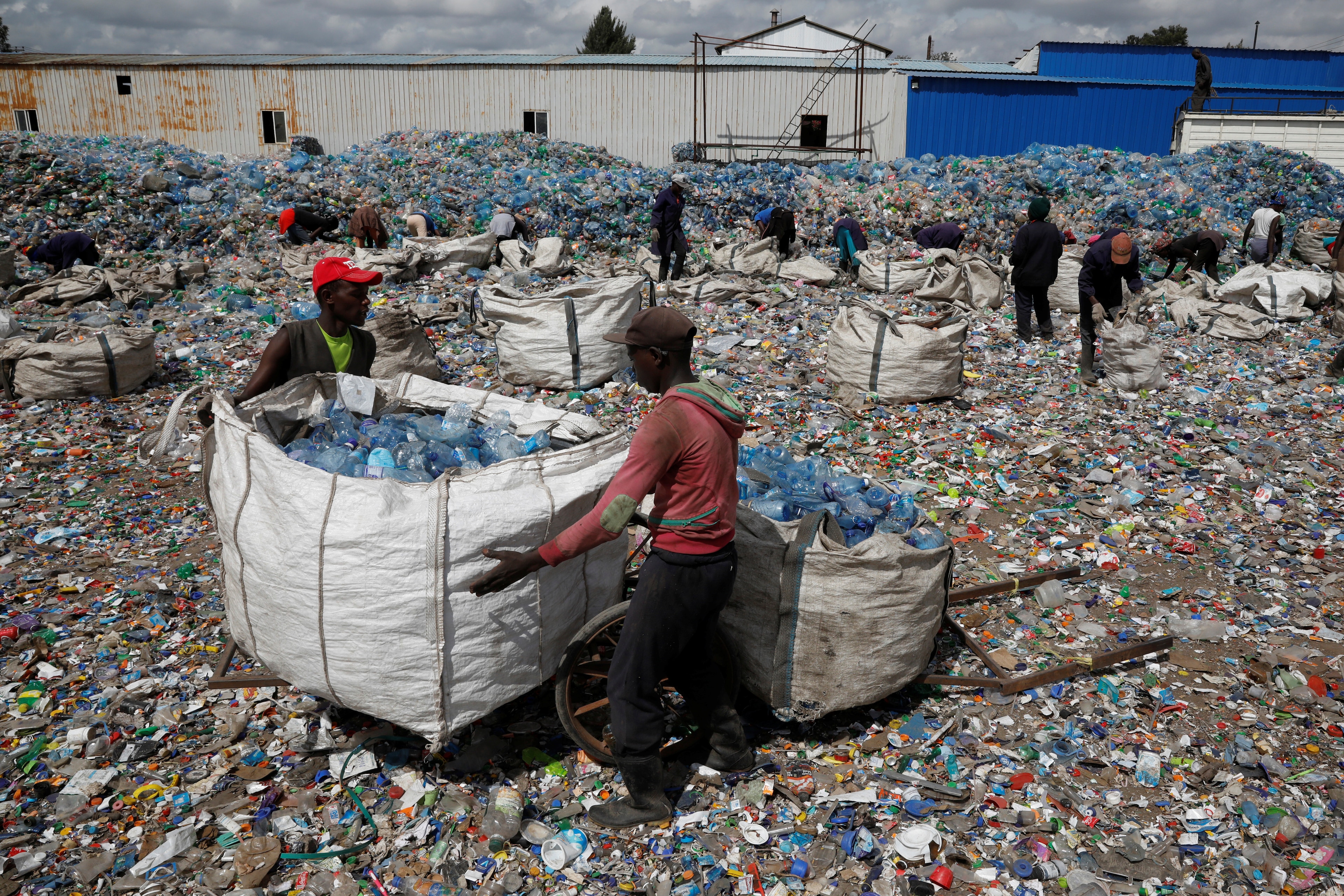Want investors to care about natural resources? Put a price on them

No one wants their standard of living to fall, but the introduction of such prices is necessary.
Image: Denis Agati on Unsplash
Stay up to date:
Institutional Investors
Listen to the article
- Long-term investors are part of the solution to one of humanity’s most pressing problems – the rapid degradation of natural-ecosystem services and resources.
- A mechanism to enable ecosystem assets to be priced, would signal their scarcity and, thereby, their value to everyone.
- Real markets would be forced to ration consumption of ecosystem assets in their production processes, as they now do for the use of physical, technological, and human capital.
- Financial markets would be better able to identify and ration capital to companies whose franchise values were at risk from the inefficient use of ecosystem assets.
Covid-19 has laid bare deep divisions in society, and its impact has not been felt equally. In a similar way, we do not expect climate change and the degradation of natural resources to have equal effects on communities. The impacts will likely include uneven local effects, increasing numbers of climate refugees, relative price shocks and other opportunity costs.
Anyone paying attention to the news over the past couple of years will be aware that the focus on climate change has increased markedly. School children are striking, and lives are being lost to wildfires, floods, droughts, famines and intense storms. Carbon emissions receive a lot of attention, but other natural ecosystem resources are also showing signs of stress.
Fresh water is less available, the oceans and associated fish stocks are less healthy, and species are being lost at an accelerating rate. And yet, all of us are still free riders, consuming goods and services whose prices do not account for the costs of the ecosystem assets used up in their production.
This challenge is particularly acute in the face of rising inequality within nations (even as inequality between regions reduces), where living standards are already perceived to be under threat and trust in political systems has weakened.
What should be the role of investors?
Sovereign wealth funds, insurance companies and individual savers (as represented by pension funds), can and should be part of the solution to reducing ecosystem asset depletion.
Such long-term investors should already be thinking about the risks to corporate franchise value arising from inefficient use of natural ecosystem-assets. A number of institutions are already thinking about this, but some are more advanced than others.
A recent World Economic Forum white paper, conducted in collaboration with Mercer, surveyed 30 asset owners representing over $3.4 trillion in total assets. The study found that there was significant variation in how asset owners integrate global systemic trends, such as natural resource degradation and inequality, into their strategic decision-making and more needs to be done to accelerate progress and impact.
Financing Sustainable Development
This matters to everyone - not just long-term investors. It matters for the quality of the air you breath and the water you drink. And it matters financially, because these risks can threaten the quality of long-term investor portfolios thereby affecting their capacity to payout your future pension entitlements or insurance claims.
This matters to everyone - not just long-term investors. It matters for the quality of the air you breath and the water you drink. And it matters financially, because these risks can threaten the quality of long-term investor portfolios thereby affecting their capacity to payout your future pension entitlements or insurance claims.
”We need to put a price on natural resources
The capitalist system that has been so successful in lifting billions out of poverty allocates resources in response to price signals. The more expensive something is, the more the system seeks to economize on it. The cheaper something is, the more the system will use it. So, if natural ecosystem assets are free to use, we will over-consume them (as we have done so) – until the resource is in credible danger of running out. Cape Town’s response to the threat of running out of water is a highly instructive case study.
We do not pretend that introducing prices for previously free resources will be easy. The gilets jaunes protests in France and the toll road protests in Norway both show that there will be resistance to even small increases in prices looking to conserve natural resources, even in rich countries.
No one wants their standard of living to fall. The practical constraints on the UN’s REDD+ programme attest to some more of the challenges involved. This programme attempted to price the immense amount of carbon in the world’s last remaining rainforests to effectively give value and payment for their preservation, partly funded by carbon offsets. But complexities of land ownership and, to paraphrase David Attenborough, “the attraction of greed to value”, undermined this intent.
Failure, however, is part of the journey to success. We believe that the introduction of such prices is a way to accelerate the capacity of markets to properly account for the use of precious ecosystem assets that to date have been consumed for free.
Where would we start?
A blog post cannot offer complete solutions to problems as complex as these. But we offer the following ideas to seed the debate and hopefully to encourage action.
1. Investors: If the constraints on capital markets were suddenly eliminated and natural ecosystem assets could be efficiently priced according to their limited supplies and fragile quality, how would the weights change to existing listed companies in the world’s equity and debt market indices? What would the optimized ‘planetary health’ or ‘as if’ portfolio look like?
2. Governments and regulators: The opportunity and the challenge for regulators and governments is to lead through the introduction of pricing systems for natural ecosystem resources. How should these pricing frameworks be designed for robust transition to a full pricing of all factors of production, and not just the man-made ones?
3. Consumers: The opportunity and the challenge for consumers is to recognize that the cost of many of the goods and services we enjoy is currently being heavily subsidized by the planet. What would the ‘true price of …’ be, if the water and bio costs of production were included? We know the amount of water, for example, that is required to produce a hamburger or a pair of jeans. But we do not pay for it in the price of those goods.
If we could account for these costs alongside consideration of capital, labour and technology input costs, we could show that the true price of many goods would be multiples of their existing market prices and would incentivize substitution towards goods whose production places far less demands on our natural ecosystem.
We know the amount of water, for example, that is required to produce a hamburger or a pair of jeans. But we do not pay for it in the price of those goods.
”4. Sovereign wealth funds: These funds, which serve the interests of current and future taxpayers, could assume more of the character of sovereign development funds. This could involve a target of, say, 10% of assets devoted to investments designed to impact welfare and support biodiversity and natural ecosystem-asset preservation in the regions from which their investment returns are drawn.
5. Financial industry participants: We can encourage transparency across the financial industry with respect to the TCFD framework, integrated reporting and the ambitions of the UN sustainable development goals.
6. Impact products: We could consider a mutual rating system, like those for accommodation or transport, so that issuers of, and investors in, sustainability-related securities rate each other – a potential protection against green- or rainbow-washing.
This article is part of a series authored by current and former members of the Global Future Council on Investing.
Accept our marketing cookies to access this content.
These cookies are currently disabled in your browser.
Don't miss any update on this topic
Create a free account and access your personalized content collection with our latest publications and analyses.
License and Republishing
World Economic Forum articles may be republished in accordance with the Creative Commons Attribution-NonCommercial-NoDerivatives 4.0 International Public License, and in accordance with our Terms of Use.
The views expressed in this article are those of the author alone and not the World Economic Forum.
Related topics:
Forum Stories newsletter
Bringing you weekly curated insights and analysis on the global issues that matter.
More on Global RisksSee all
Pranidhi Sawhney and Adam Skali
July 29, 2025
Oliver Kade, Sarah Hadley and Judith Ketelslegers
July 28, 2025
Nasim Pour, Sebastien Cross and Joel Gould
July 28, 2025
Naoko Tochibayashi
July 28, 2025
Muhammad Hassan Dajana and James Balzer
July 22, 2025
Sasha Havlicek and Daniel Dobrygowski
July 21, 2025






